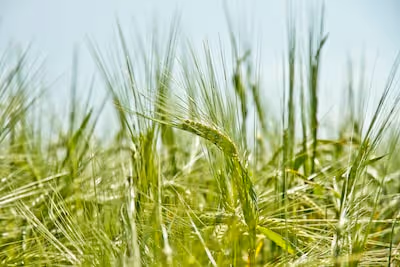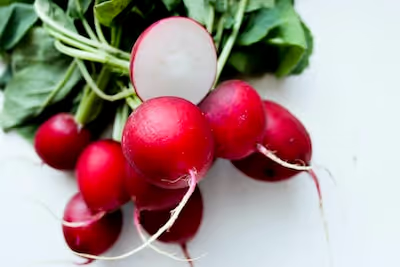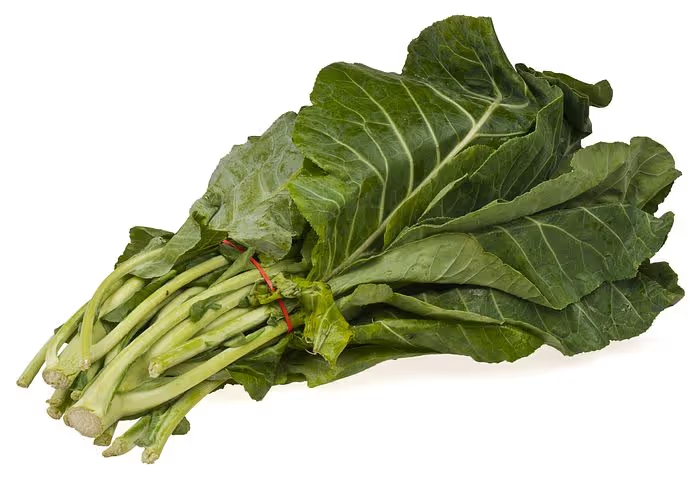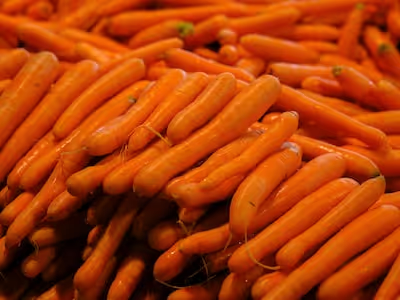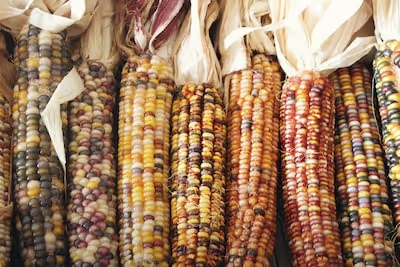Growing Navy Beans: How to Plant, Grow, and Harvest at Home
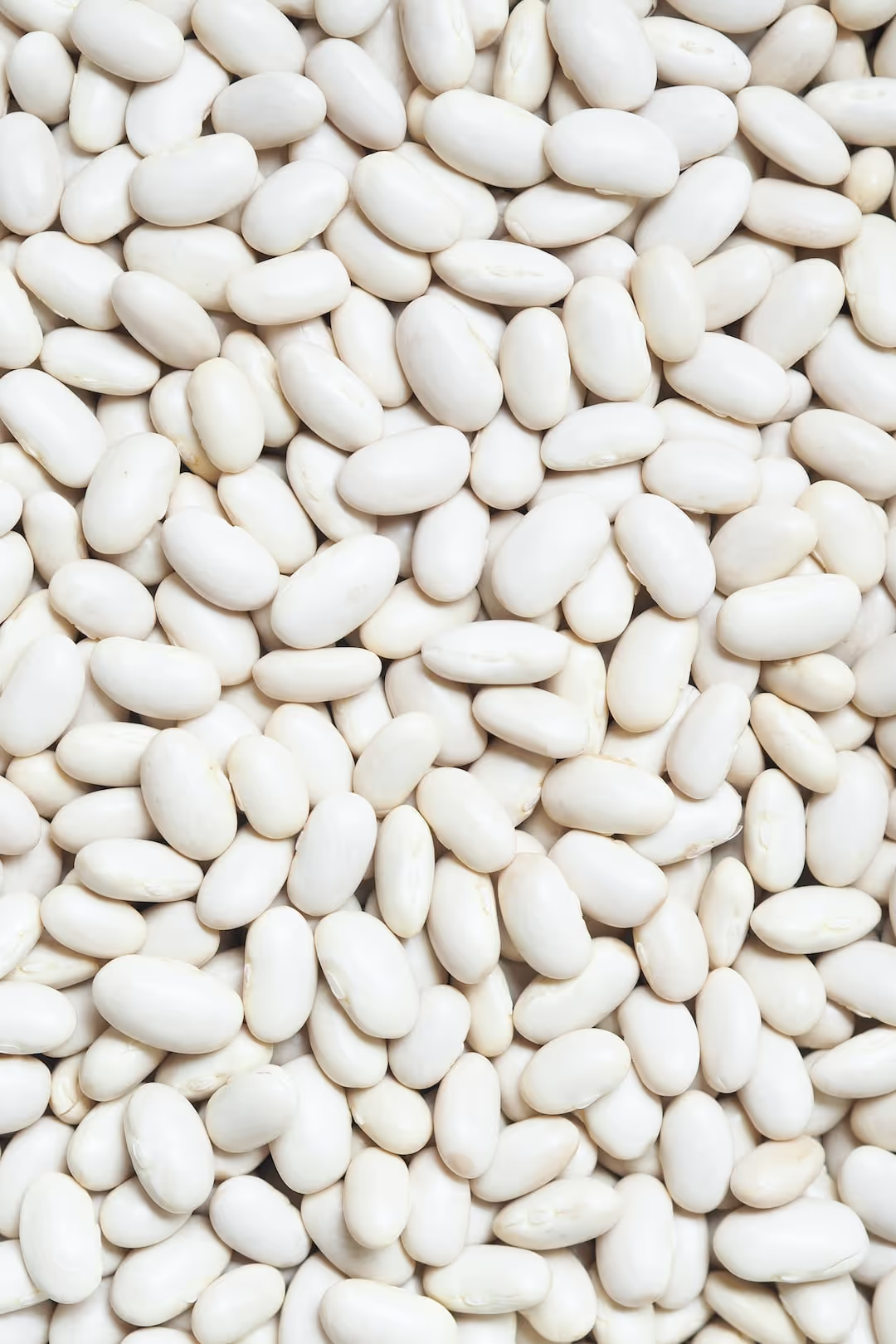
Growing Navy Beans
Growing navy beans puts tasty protein and fiber on your table right from your backyard garden. These hardy legumes thrive in warm weather, full sun, and well-drained soil, rewarding your efforts with plentiful pods ready in around 90 days. With a bit of space and some simple care, growing navy beans gives you hearty harvests and homegrown flavor—read on to get started.
Cheatsheet: Navy Bean Home Grower's Guide
🌱 Site & Timing
- Full sun; 6+ hours daily
- Sow after last frost, soil 65-75°F (18-24°C)
- Well-drained, loose soil, pH 6.0-7.0
🛠️ Tools and Products You'll Need
- Trowel or hoe
- Navy bean seeds (heirloom or organic)
- Garden gloves
- Compost or aged manure
- Rake
- Mulch (optional for moisture retention)
🌾 Planting Steps
- Prep: Mix 2-3" (5-8cm) compost into 6" (15cm) of soil
- Direct sow seeds 1-2" (2.5-5cm) deep, 2-3" (5-8cm) apart in rows 18-24" (45-60cm) apart
- Thin seedlings to 6" (15cm) apart when 3" (8cm) tall
💧 Water & Care
- Keep soil evenly moist until pods set
- Water: 1" (2.5cm) per week; drip works best
- Weed early; shallow roots
- Mulch to reduce weeds, retain moisture
- No high-nitrogen fertilizer (promotes foliage, not beans)
🐝 Pests & Diseases
- Rotate crops yearly
- Watch for bean beetles, aphids
- Promote airflow to deter mildew
🍃 Harvesting
- Ready in 80-100 days; pods yellow, feel dry
- Pick early morning; avoid rain
- For dry beans: Pull plants, hang upside down in airy spot 7-14 days
- Shell when pods rattle and split easily
🥗 Nutrition & Self-Sufficiency
- 8g protein, 7g fiber per ½ cup (95g) cooked
- Rich in iron, folate, magnesium
- Excellent winter pantry staple
📦 Storage
- Dry beans fully; store in airtight glass or Mylar
- Lasts 1-2 years cool, dark, dry
-
Growing Navy Beans: How to Plant, Grow, and Harvest at Home
I grow navy beans for the pantry and the pleasure of cracking open dry pods that sound like little rattles. They thrive with lean care, warm soil, and a gardener who respects timing.
Why navy beans deserve a row
Growing Navy Beans pays you back in nutrition and shelf-stable protein. One cooked cup delivers about 15 g protein and roughly 19 g fiber, according to USDA FoodData Central.
“Dry edible beans are nutrient dense and store well, making them a reliable staple.” USDA, FoodData Central and Agricultural Research Service
Timing and temperature
Beans need heat, not haste. I sow after the last frost once soil holds at 60 to 65 F (16 to 18 C) at 2 inches deep for several days.
“Direct seed beans in warm soil, minimum 60 F, for reliable emergence.” University Extension guidance from multiple land-grant sources
Navy types run 80 to 100 days to dry maturity, so count backward from your first fall frost. If your season is short, use early varieties and black plastic or a low tunnel to warm the bed.
Soil and site prep
Well-drained loam makes all the difference with beans. Target pH 6.0 to 7.0 and avoid compacted or soggy ground that stalls roots and invites rot.
I lay 2 to 3 cm of finished compost and work it into the top 10 to 15 cm. Skip heavy nitrogen, because beans fix their own with the right rhizobia.
An inoculant labeled for common beans (Phaseolus vulgaris) improves nodulation in soils without recent legumes. Dust the seed right before planting, easy win.
Variety picks that behave in home beds
- ‘Rainy River’ bush navy, early, uniform dry-down, tidy plants.
- ‘Michelite’ classic small white bean, reliable in many regions.
- ‘Nautica’ compact, good pod set under moderate stress.
- ‘Shoshone’ white dry bean with solid disease tolerance.
- Heirloom swap if naval types are scarce, try small white dry forms sold simply as “Navy” or “Small White.”
For culinary range, I also grow a row of Great Northern and Cannellini. Rotation helps with disease pressure and the soup pot never complains.
How to plant navy beans
Direct sow only, transplants sulk. Plant 1 inch deep (2.5 cm), spacing seeds 3 to 4 inches apart (8 to 10 cm), with rows 18 to 24 inches apart (45 to 60 cm).
I tuck two extra seeds at row ends for gap-filling later. Thin by snipping, not yanking, once the first true leaves expand.
Water and nutrition
Give 1 inch of water per week (25 mm), more in hot wind, less once pods start to tan. I irrigate at soil level early in the day to keep foliage dry.
Beans hate overfeeding. If a soil test calls for it, side-dress light phosphorus and potassium at early bloom and skip nitrogen unless leaves show frank deficiency.
If nodules stay tiny or white at midseason, inoculation failed or soil ran cold. A light fish or seaweed foliar can bridge the gap, but do not push lush vegetative growth.
Mulch and weed control
Weeds steal early. Keep the row weed-free for the first 3 to 6 weeks, which extension specialists call the critical window.
“The weed-free period for dry beans spans early emergence through early flowering.” University of Minnesota and NDSU Extension summaries
After the soil warms, I mulch between rows with 2 to 3 inches (5 to 7.5 cm) of clean straw. Keep mulch an inch off stems to prevent rot splash.
Flowering, pollination, and pod set
Common beans are self-pollinating, but heat waves can abort blossoms. Keep even moisture during bloom and early pod fill, the yield depends on it.
A little afternoon shade from taller crops on the west edge helps during brutal weeks. I park a portable shade cloth at 30 percent on the worst afternoons.
Pests and diseases I actually see
- Mexican bean beetle leaves laced. Hand-crush yellow egg clusters under leaves, release Pediobius wasps if you can find them, and use row cover until bloom.
- Aphids and spider mites flare in heat. A hard morning water blast and spotted applications of insecticidal soap keep them honest.
- Common bacterial blight shows V-shaped leaf lesions. Start with clean seed, avoid overhead watering, and rotate 3 years out of beans.
- Anthracnose and rust ride in on seed and residues. Sanitation and resistant varieties matter, so do wide rows for airflow.
- Root rots from Pythium and Rhizoctonia love wet feet. Fix drainage, raise beds, and do not plant into cold muck.
Citation trail exists for all of the above across Cornell, NDSU, and UC ANR extension pages. The patterns match what the plants tell me every summer.
Staking and support
Navy beans are bush types, no trellis needed. Keep rows narrow enough to reach for quick harvests without trampling roots.
Harvest timing that hits the sweet spot
You are after dry beans, not shellies. Let pods dry on the plant until most rattle and turn parchment colored.
“Harvest dry beans when about 80 to 90 percent of pods have turned yellow to tan and seeds are firm.” North Dakota State University Extension
If a storm threatens, I cut whole plants at the base and hang them upside down under cover. Good airflow finishes the cure in 7 to 14 days.
Threshing without fancy gear
I stuff dry pods into a clean contractor bag and stomp gently, then pour the mix across a box fan to winnow chaff. A second pass gets it clean enough for the jar.
If humidity runs high, finish beans in a dehydrator at 95 F (35 C) until they crack under a fingernail. Storage targets 10 to 13 percent moisture for safety.
Storage that prevents weevil heartbreak
Freeze finished beans 72 hours to kill hitchhikers, then store in airtight glass or food-grade buckets with oxygen absorbers. Keep them cool and dark to extend quality two to three years.
Old beans still cook, they simply take longer. I label jars with harvest month so I know what to soak overnight and what needs a pressure cooker.
Cooking perks from the garden to the pot
A 1 to 3 percent salt brine soak keeps skins intact, I use 1 tablespoon kosher salt per quart water or 15 g per liter. Hard water stiffens skins via calcium crosslinks, so a pinch of baking soda softens stubborn lots.
I simmer with a bay leaf and an onion end, low and steady until creamy. Save that bean liquor, it is pure umami for soups and casseroles.
Companions, rotation, and cover crops
I keep beans away from the onion bed, they seem to stall near heavy alliums. Corn on the north side casts just enough midsummer shade without competition for space.
Rotate out of legumes for three years. A preceding oat or rye cover mowed early leaves a fine seedbed and reduces soil splash.
Raised beds and containers
Navy beans run compact, which suits raised beds. In containers use at least 10 gallons (38 L), a gritty mix, and consistent water so pods fill instead of stalling.
Top seed and gear choices for Growing Navy Beans
- Seed: Choose certified, disease-tested seed for fewer seedborne problems, look for lots labeled high germination above 85 percent.
- Inoculant: Use a fresh-season packet for Phaseolus, store cool, and apply right before sowing for live nodulators.
- Irrigation: Simple drip tape on a battery timer saves crops during heat spikes and keeps leaves dry.
- Row cover: Lightweight fabric blocks beetles until bloom. Remove at flowering for self-pollination access.
- Harvest tools: Pruners for whole-plant cutting, breathable produce bags for hanging cure, and a small fan for winnowing.
Common problems and my fast fixes
- Yellow leaves early: Cold soil or wet feet, pause irrigation, scratch the surface to breathe, and wait for warmth.
- Lush vines, few pods: Excess nitrogen, halt feeding and let plants shift to reproductive mode.
- Pods with few seeds: Heat stress at bloom, water in the morning and add light afternoon shade.
- Beans split in storage: Dried too hard or too fast, next time slow the finish and test crack with a thumbnail.
Small, credible bytes that guide decisions
“Plant after frost, on warm soils, and avoid high nitrogen to reduce vegetative growth and improve yield.” University of Wisconsin Extension
“One cup of cooked navy beans supplies roughly a third of daily fiber needs.” USDA FoodData Central
Season checklist for Growing Navy Beans
- Early spring: Prep beds, soil test, and line up inoculant and drip parts.
- Late spring: Seed at 60 F soil, thin at first true leaf, and keep weeds down.
- Early summer: Mulch aisles, scout pests twice weekly, and irrigate evenly.
- Mid summer: Maintain moisture through bloom and pod fill, avoid foliar wetting.
- Late summer: Pull water back as pods tan, harvest at 80 to 90 percent dry, cure, thresh, and store.
I have grown navy beans in clay that cracked like old pottery and in sandy loam that drank fast. The beans forgave the soil both times, once I gave them heat, space, and steady hands.
Frequently Asked Questions About Growing Navy Beans
What soil conditions ensure successful navy bean growth?
Navy beans thrive best in well-draining, loamy soils with a slightly acidic to neutral pH ranging between 6.0 and 7.0. Incorporating organic compost improves soil moisture retention and fertility, encouraging healthy plant development.
When is the ideal planting period for navy beans?
Plant navy beans after the risk of frost has passed and soil temperatures remain consistently between 60°F (16°C) and 75°F (24°C). This generally occurs in late spring or early summer, depending on your region.
How deep and far apart should navy beans be planted?
Sow navy bean seeds approximately 1 to 1.5 inches (2.5 to 4 cm) deep, spacing each seed 3 to 4 inches (7 to 10 cm) apart in rows separated by 18 to 24 inches (45 to 60 cm). Proper spacing ensures adequate airflow and room for growth.
Do navy beans require stakes or trellises for support?
Navy bean plants typically exhibit a bush-type growth pattern and rarely exceed 2 feet (60 cm) in height. Therefore, staking or trellising is usually unnecessary. However, providing mild support can prevent the plants from bending under heavy pods.
What watering routine best suits navy bean plants?
Water navy beans consistently, ensuring approximately 1 inch (2.5 cm) of water weekly. Increase watering slightly during periods of extended heat or drought. Avoid overhead watering, as wet foliage can lead to fungal diseases.
How long do navy beans take from planting to harvest?
Navy beans typically reach maturity within 85 to 100 days after planting. Harvest occurs when bean pods dry and leaves begin turning yellow, signaling readiness for shelling.
What common pests or diseases affect navy bean plants, and how can these issues be addressed?
Common issues include aphids, bean beetles, and fungal diseases like anthracnose and rust. Manage pests through regular inspection and organic methods such as neem oil or insecticidal soap. Minimize disease by ensuring proper airflow, crop rotation, and removing affected foliage promptly.
Growing Navy Beans at home is straightforward, honest work with a tasty payoff. Give them full sun, well-drained soil, and steady watering, and these unassuming legumes will reward you with a reliable harvest. Watch for pests, keep weeds in check, and let the pods dry on the plant for the best flavor and storage. If you’re hungry for more bean action, check out growing lima beans in your garden or how to grow mung beans for a little variety. In the end, growing navy beans is about patience, timing, and a little dirt under the nails—worth it for a pantry full of homegrown protein.
The Prepper's Guide to Navy Beans: Nutrition and Storage Essentials
Nutrient Profile & Health Benefits
Navy beans offer dense nutritional value essential for emergency food stores:
- Protein: 15g per cooked cup (240 ml), essential amino acid supply for muscle maintenance during shortages.
- Fiber-rich: Each cup provides 19g dietary fiber, aiding digestion and sustaining energy longer.
- Minerals & vitamins: High in iron, magnesium, calcium, folate, and vitamin B-complex, supporting immune function and overall vitality.
Long-term Storage Methods
- Dry Storage: Store dried navy beans in food-grade buckets or sealed Mylar bags with oxygen absorbers, extending shelf life up to 8-10 years.
- Canning: Pressure-cook pre-soaked navy beans at 10 psi (69 kPa) for 75-90 minutes to produce shelf-stable jars lasting 5+ years.
- Optimal Conditions: Store navy beans between 50-70°F (10-21°C) at humidity below 15% to ensure maximum shelf stability.
High-yield Prepper Gardening Tips
- Succession Planting: Plant navy beans in successive 2-week intervals, ensuring continuous fresh and dried harvests.
- Space Efficiency: Utilize vertical support structures like trellises to conserve garden bed space while improving airflow and reducing diseases.
- Seed Saving Strategy: Preserve mature, healthy pods for future planting, enabling crop sustainability without external seed reliance.
Cooking and Usage Recommendations
In scarce resource scenarios, navy beans can nutritionally complement meals:
- Soup base extender: Add a handful of beans to soup pots to enhance caloric density and protein levels.
- Flour supplement: Grind dried navy beans into bean flour, substituting up to 25% of regular flour for increased protein in pantry staples.
- Sprouting versatility: Quick-growing edible sprouts provide fresh nutrients within 3-5 days, especially beneficial during prolonged periods without fresh produce.
Find out which plants will thrive in your garden!
Answer a few fun questions and get custom plant recommendations perfect for your space. Let’s grow something amazing together!

start your season
